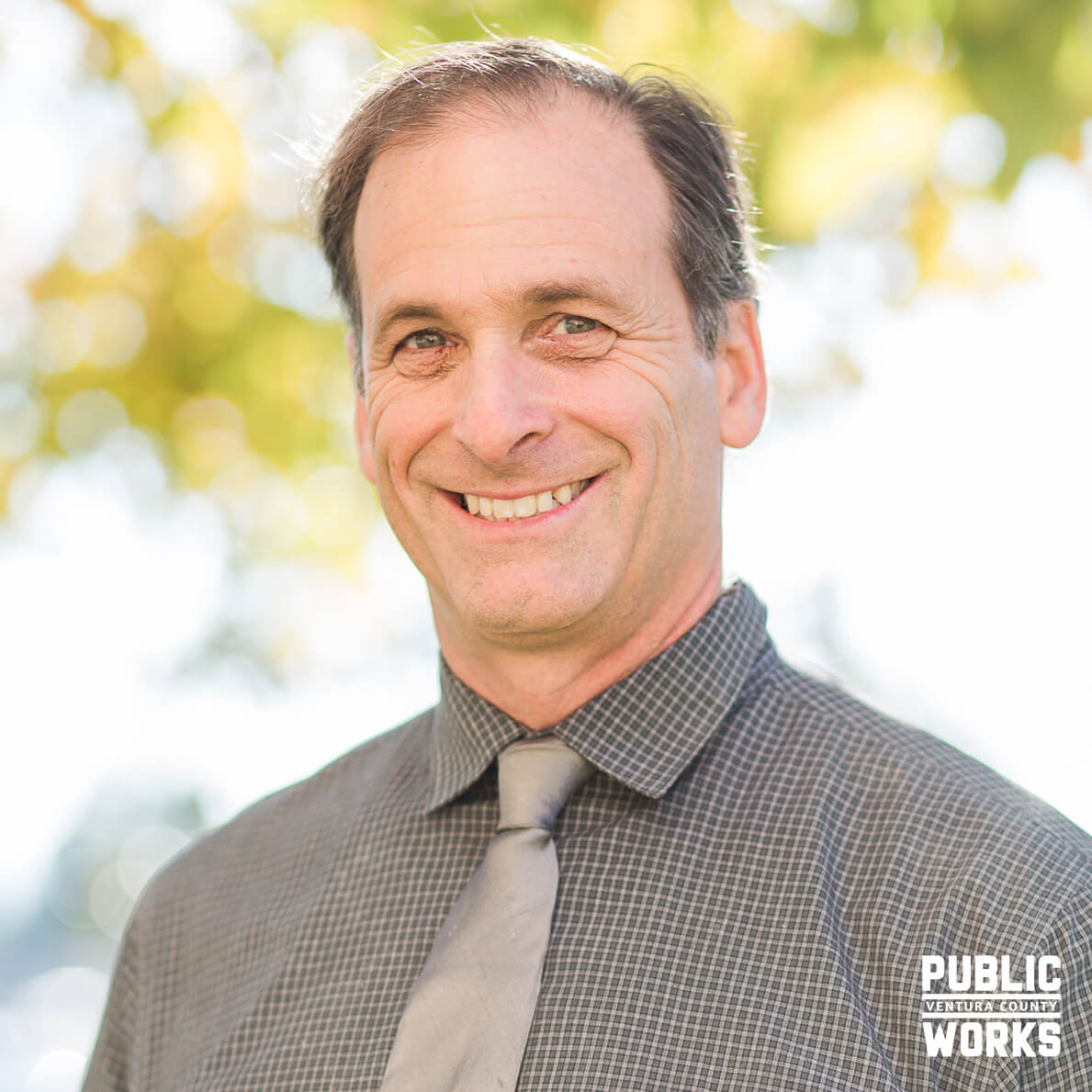Frequently Asked Questions
Ventura County Waterworks District (District) No. 19 (Somis) Proposed Water Rate Adjustments
The District was formed on November 4, 1980 when it assumed responsibility for the Rancho Las Posas Mutual Water Company. The District provides water to the community of Somis. Water is imported from the State Water Project, delivered through the Metropolitan Water District of Southern California, and Calleguas Municipal Water District, as well as groundwater from three local wells. Approximately 20% of water is delivered from imported water sources and 80% of the water is from local groundwater, which is pumped from deep aquifers beneath the Las Posas Valley.
As with other agencies, the District faces significant challenges, including aging infrastructure, regulatory compliance, environmental sustainability, and higher costs of water. Please see the list of FAQs below for more information or visit https://publicworks.venturacounty.gov/wsd/ Water and Sanitation News.
Q: Why are rate adjustments required?
A: The last time rates were adjusted was January 2018. Costs have increased by $600k cumulatively over the past two years. Revenues have decreased by $600k, for a net deficit of $1.2M over the past two years. From fiscal year 2019 to fiscal year 2020 the District will experience additional costs:
- Increases in the cost of power of approximately $107k annually;
- Increases in the cost of labor, including salaries and benefits of approximately $326k annually;
- Costs of the Las Posas Basin groundwater adjudication attorney fees of approximately $66k; and
- $1.2M Loan for Well 2 Iron and Manganese Filtration Project estimated $60k annually for 30 years.
Q: What is the Well 2 Iron and Manganese Treatment Project?
A: The raw water pumped from Well No. 2 located in Waterworks District No. 19 (District) is high in iron and manganese concentrations and produces milky, brownish, and sometimes even reddish colors. Although safe to drink, it stains washing clothes and fixtures, and customers have concerns about drinking and cooking with water that has colors and suspended particles. It is expensive to install individual home treatment units to remove the iron and manganese. In addition, it exceeds the secondary Drinking Water Standards regulated by the Los Angeles Regional Water Quality Control Board (LARWQCB). The LARWQCB Division of Drinking Water (DDW) has required District 19 to treat and remove iron and manganese from the well water to meet the secondary Drinking Water Standards. Currently the District is operating under a waiver for secondary standards for iron and manganese that expires at the end of 2019.
Q: Why does the District need a loan for the Well 2 Iron and Manganese Treatment Project when it received $2.65M in State grant funding?
A: Unfortunately, the total cost to complete the Well 2 project is approximately $3.85M and exceeds the amount of available State funding. This total includes the cost to award the construction contract, construction inspection and contract oversight provided by County staff, construction oversight by the Designer of Record, and a 10% construction contingency. A $1.2M loan is required for the County to award the contract and to cover the rise in construction management costs. This loan is estimated to cost rate payers $60k per year over the next 30 years.
Q: Can the District increase its revenue without raising the rates?
A: Aside from grant funding for specific projects, there is no mechanism for the District to increase revenue for its operations or to pay down debt for capital improvement projects without raising rates.
Q: Are water rate increases required every year?
A: Water rates are not required to increase each year but as a rule of thumb it is best to keep up with inflating costs as they occur rather than making drastic rate changes.
Q: What is the purpose of the monthly fixed meter charge?
A: It is used to recover billing costs, meter reading, and meter-related costs such as meter testing, repairs and replacements, and system capacity charges. This charge reflects the fact that even when a customer does not use any water, the District incurs fixed costs in connection with the maintenance of the meters, the ability or readiness to serve each connection, and the billing services provided to each connection. The meter charge also increases with meter size and is used to collect a portion of the costs associated with the size or capacity of the District’s water delivery system. This reflects the fact that larger meters have the potential to demand more water than smaller meters.
Q: What would happen if we did not increase the rates this year?
A: Water rates will inevitably be required to go up, if the rate increases are postponed it could result in drastic increases in water rates in a short period of time. Delaying an increase in rates may also have a cascading effect of needing more funds to catch up on repairs that were unaffordable while rates were too low to cover operational costs. Specifically, for District 19 the impacts of not raising rates may include:
- Potential to go cash negative;
- Inability to acquire bond debt required to award Well 2 Treatment Facility Project
- May result in Division of Drinking Water shutting Wells 2 and 3 down
- Would result in an increase in purchases of more expensive imported water
- Future rate adjustments would be steeper;
- Inability to acquire bond debt for future pipe replacement projects and Well 3 Treatment Facility; and
- Deferment of maintenance and repairs, which will exacerbate existing infrastructure problems due to old age.
Q: How will the rate increase affect the average customer’s bill?
A: To better calculate how the rate increase will impact your monthly bill, please visit https://s29422.pcdn.co/wp-content/uploads/2019/09/wwd19.html to access the rate calculator.
Q: How have the Public Safety Power Shut-Offs (PSPS) and the Maria Fire affected District 19 water operations?
A: The District has been able to successfully keep electrical power on during public safety shutoffs, using backup generators, topping off water tanks and maintaining system pressure. We had no major issues reported in the water system during the Maria Fire firefighting efforts.
Q: The District is always talking about needing to replace old pipes and reservoirs. What is the plan and how will these projects be funded?
A: The District has a long–term capital replacement plan that includes projects to replace old water main pipes and replace aging reservoirs. These projects typically cost between $3M and $5M depending on the scope. The District will continue to seek out State and Federal Grant funding but will likely be required to take out additional debt to fund these projects. If the District has sufficient revenue it can execute approximately $2-3M in debt-funded projects per year over the next 10 to 15 years.
Q: What infrastructure projects has the District completed in recent years?
A: The District has successfully completed many projects in various locations in Somis over the past 5 years, including:
- Emergency re-lining of Reservoir 538
- Sand Canyon Road Booster Pump Station and Pipeline Upgrade – increased the capacity of the Sand Canyon Booster Pump Station; and replaced an 8-inch line segment with 12-inch line (2,850 linear feet).
- Donlon Road Pipeline Upgrade – replaced 8-inch water line with 12-inch line (1,320 linear feet).
- Bradley Road Pipeline Upgrade – replaced 6-inch water line with 14-inch line (620 linear feet)
- Kingsgrove Drive Pipeline Upgrade – replaced 8-inch water line with 12-inch line (920 linear feet)
- Balcom Canyon 12-inch water line replacement (2,600 linear feet)
- New Balcom Canyon Turnout and Well 4 Blending Station
- West Street Alley Pipeline Upgrade and Replacement – replaced the existing 4-inch water line in the West Street Alley with 8-inch line (1,360 linear feet) and replaced 38 service lines
- Well 2 and Well 3 Pump Emergency Replacement Projects in 2017 and 2018
- Since 2015,the District has repaired 32 mainline leaks and 26 service line leaks.
Q: What are the benefits of the County of Ventura managing and operating Waterworks District 19?
A: The County managed water system allows for economies of scale. A few of the many benefits include:
- Our staff consists of 36 Operations and Maintenance (O&M) personnel, engineers, managers, and customer service agents that provide direct labor support to Waterworks District 19. However, the total labor hours spent in Fiscal Year 2019 for the District was equivalent to 5.2 Full-Time Equivalent Employees (FTE). For the Fiscal Year 2020 budget, we increased the labor to 5.7 FTE to support the District.
- When we have emergencies, we use all available resources required to fix the situation. In many cases, this may mean deploying a crew of 10 workers or more.
- For example, during the Maria Fire our O&M crew responded to a water line break in the Berylwood area on November 2nd that affected approximately 40 customers. We were able to restore service in about 10 hours.
- Having a deep bench of personnel that can surge in times of emergencies, such as PSPS’s and fires, gives District 19 a huge advantage over independent water districts or mutual water companies of a similar size, that may not have the labor resources available to respond when needed.
- Technology investments made by Ventura County Water and Sanitation Department for all of four County Waterworks Districts, such as our remote monitoring SCADA system and our GIS-based asset management system provide an additional level of efficiency and safety to District 19 operations at a fraction of the cost. The share of computer and billing systems cost for the District is only 7.8%.
- The District is also able to take advantage the County-wide microwave radio communication system for its critical remote SCADA monitoring system. This is the same communication system that is used by Ventura County Sheriff and Fire Departments.
- District 19 leverages the County Water and Sanitation Department’s certified state-of-the-art laboratory for all potable water testing. This saves the District money compared to using a commercial laboratory.
- District 19’s share of equipment and other assets procured by Ventura County’s Water and Sanitation Department is only 20%. A few examples are:
- Recent purchase request for a $10k walk-behind concrete saw that will only cost District 19 $2k
- The $89k Vactor Trailer used to expedite water line repairs that cost District 19 only $18k.
- The $66k Valve Turning Maintenance Trailer cost District 19 $13k. This trailer reduces the labor required and provides a higher level of maintenance for District 19’s approximately 500 valves.
- AAA Bond Rating of the County of Ventura allows Waterworks District 19 to take advantage of favorable interest rates for bond–funded projects.


